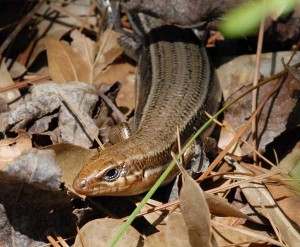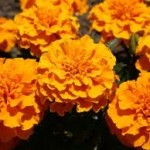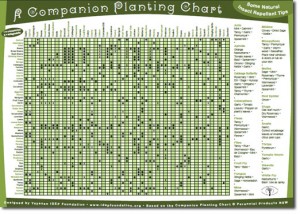Six Things you’ll find in a Kitchen Garden!
In the Food Forest DVD, Permaculture teacher Geoff Lawton takes you through his Kitchen garden where he introduces students to the concept of companion planting. Here the kitchen garden is deliberately designed with a riot of flowers and vegetables deliberately designed to confuse pests from eating the produce.
Predators
Small rockeries are integrated within the vegetable garden to be a haven for small predator lizards, always on the lookout for the odd insect.
Bird baths are also a feature of the permaculture kitchen garden. By attracting small birds to enjoy the garden a lively control mechanism is put into play to keep the system in balance.
Mulching
Because of the no dig philosophy of Permaculture gardening, soil life is increased over the years. Under the mulch of a great kitchen garden are billions of bacteria, nematodes, micro-organisms and small creatures that help keep the soil friable, loose, damp, dark and rich with organic compost. Plants boom with vitality, making them resistant to disease and pest infestation. The soil food web is very much intact in a Permaculture garden. Adding straw mulch throughout the year just makes things grow better. Permaculture Soils increase with fertility as soils are continually made each year. Not lost or depleted.
Marigolds
Every Permaculture garden seems to have a clump of Marigolds tucked away in one corner. Their bright colours are said to distract flying insects. Apart from being a very hardy plant, Marigolds are ideal to plant next to potatoes, tomatoes and even roses. Permaculture old timers plant Marigolds in pots and place around the home. Dogs won’t cock their legs up against a pot of Marigolds they say!
Knowing what plants relate well to one another is useful knowledge to assist you in getting minimizing potential failure. Here is a list of useful vegetable to plant together and a list of plants that seemingly don’t like each other.
Companion Planting
Companion planting is the planting of various vegetables and plants next to each other.
The idea is that they help one another in nutrient uptake, pest control and pollination. Some plants just seem to like being next to one another.
Companion planting is used often by Permaculture gardeners to work with nature to get a better crop return with minimal effort.
But the idea is not new.
Many of the modern methods of companion planting are as old as the original cottage gardens in England or traditional gardening methods found in Asia.
Many of these concepts rely on a plants natural alleolpathic tendencies.
Allelopathy
Allelopathy is word to describe a plant’s inhibition to grow next to another plant or organism. Some plants makes good and bad neighbours. Maybe its the way plants exude a scent or root excretion that makes for strange bedfellows. But companion planting is well known amongst experienced gardeners.
Comfrey
If you visit a real permaculture kitchen garden you’ll will be hard pressed not to find this plant somewhere growing in the corner. The real use of comfrey is to build fertility into the soil. Watch out for chickens and cows as they love eating the stuff. It is said that Comfrey sends down deep roots and brings up minerals from the subsoil. Its leaves is often used as a compost activator as well as being an excellent nutritious mulch. Just rip out a few leaves as you walk past and throw them around your growing vegetables. Some people even use it to make a liquid feed.
Its never too late to start working on a modest kitchen garden. The basics are easy and you can start on an instant permaculture garden and have it done in an afternoon. Some people get so motivated they start looking for a bigger challenge – like growing a food forest in their back yard!











nice information..thnks for sharing it..